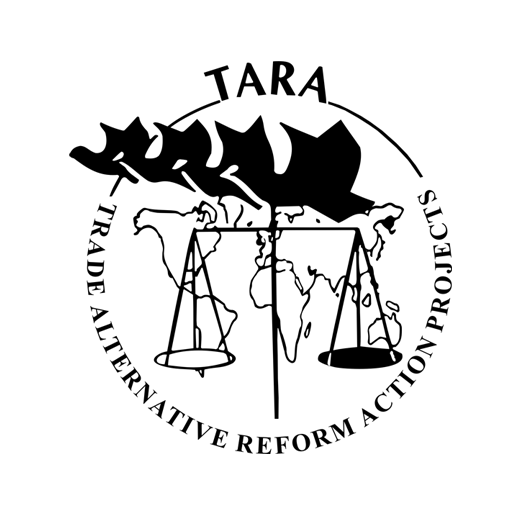INDIA
Delhi
Delhi, a crossroads of cultures
In India, the ODDATARA documentary was shot in the city of Delhi and in small towns and villages in the two states that surround it: Haryana and Uttar Pradesh. Located in the northwest of India, this region has housed several capitals of the Indian subcontinent since the establishment of the Delhi Sultanate in the 13th century.
Even today, one can easily recognize the countless cities on which Delhi was built, in a succession of sieges, demolitions, refoundings and redefinitions. This explains the multitude of names the city bears, which are quite challenging to disentangle for a foreigner.
"Delhi" means the entire megapolis, "New Delhi" is British Delhi, located in the central-eastern section of the megapolis: founded in the 20th century, it remains the administrative headquarters of the capital. "Old Delhi" is slightly north of New Delhi and encompasses the remains of the former capital of the Mughal Empire, which dominated India before the arrival of the English.
Not unlike Washington DC in the United States, Delhi is a territory in its own right, independent of the other states of India. However, its immense urban sprawl spills over its two neighboring states. With nearly 26 million people in 2016, it is listed by the United Nations as the second largest urban area in the world.
Haryana, which surrounds Delhi in the north, west and south, is a small state best known for its agriculture and a heritage that dates back to Vedic times: the primeval era of Hinduism. It is also a region increasingly affected by desertification, and its slash-and-burn agriculture is one of the main sources of air pollution for Delhi.
Uttar Pradesh, east from Delhi, is the most populous state in India, with 200 million inhabitants. Widely seen as India’s bread basket due to its immense agricultural activity, this state is considered as the "Hindi heart of India" as it is the cradle of the major sacred texts of Hinduism, such as the Mahabharata. With a population made up of an 80% Hindu majority, it is infamous for its religious tensions, especially towards the Muslim minority (1.8% of its population).
Located in a strategic sector of the Indo-Gangetic plain, Delhi and its surroundings have always been a region of cultural exchanges, constantly crossed by foreign armies and inhabited by the great philosophers of Hinduism, Buddhism and Jainism.

The cultural wealth of Delhi
Arriving in Delhi during monsoon season can be a shocking experience. In 2019, the region was going through a severe drought: the lack of rain made the heat unbearable, and one had to depend on the mercy of air conditioning to withstand the climate.
Leaving the Indira Gandhi international airport, one is first confronted by the multitude of cars that roam the city’s highways, managing to drive smoothly without seeming to respect any semblance of traffic regulations. On the billboards, promises of all kinds are made to travelers, delivered by the ubiquitous Bollywood star Amitabh Bachchan, or by the unnervingly serene gaze of Prime Minister Narendra Modi.
As one enters deeper into the Delhi, an endless succession of temples begins, showcasing all faiths imaginable, from the white pagodas of the Hindus to the colossal gurdwaras of the Sikhs, as well as the centenary mosques of old Delhi , or the large and empty Lotus temple of the Ba’hais, a strangely beloved landmark of the city.
A city that has been destroyed and refounded a hundred times can only have a highly complex history, and its cultural diversity is a proof of this eventful past. It is impossible to truly "understand" Delhi in a mere couple of weeks: one can only scratch fragments of the cities that compose it.
For instance, on can easily distinguish British New Delhi, with its monumental and vaguely impersonal character, from Muslim Old Delhi with the Jama Masjid mosque sitting in its center like a jewel, surrounded by countless crowded streets, where old Mughal palaces slowly disappear behind dust, concrete and electric cables. Still, these are but two fragments of a huge city that is challenging to pin down.
The challenge of inequality and religious tensions
As a foreigner, it is easy to get carried away by a fascination of Delhi’s exoticism.
However, one must not forget the tensions that run through the country, which are currently exacerbated under the nationalist government of Narendra Modi, reelected with an overwhelming majority in 2019. Indeed, while it defends the ideal of a "renewal of India” and undertakes ambitious social and infrastructure policies, this government also espouses a deeply nationalist ideology.
Its explicit defense of the Hindutva - or "Hindu-ness" - is widely seen as an act of exclusion of other Indian communities, and mainly towards the Muslims. In a Nation founded on the principles of secularity and unity in diversity, this new ideology has had far-reaching consequences. And the proliferation of xenophobic fake news has exacerbated tensions.
In a city like Delhi, founded by Muslim empires and host to countless migrants after independence, Hindu nationalism is received with fear by minorities. As the rural flight and border tensions continue to increase, the migrant population in the capital is bound to swell.
One only needs to walk through a few areas of the city to witness the impact of migration on its culture. Chandni Chowk Street, one of the oldest markets in Old Delhi, is lined with temples of all religions: Islam, Hinduism, Sikhism, Jainism and even Christianity. In the outskirts of the city, Tibetan refugees founded Buddhist temples, covered with banners bearing the image of the Dalai Lama; elsewhere, new slums are founded by Hindus from Kashmir. In the Dili Haat market, students from Delhi’s universities gather to buy Dim Suns from restaurants founded by the Chinese and Nepalese diaspora.
It would be dishonest to say that this coexistence has always been peaceful: accounts of religious conflicts go back centuries, and community ghettos have formed in several corners of the city. This division is even felt in the regional language: the Hindustani of Northern India has been neatly divided between a "Sanskritized" Hindi for the Hindus and a "Persianized" Urdu for the Muslims and Pakistanis.
The increase in community tensions in India is heightened by its persistent economic inequalities. In fact, despite its status as an emerging country and the 5th largest economy in the world, the country's wealth is very badly distributed, particularly between its states.
Are these inequalities exacerbated by the caste system, a cultural feature that has often appalled westerners? This remains difficult to determine, especially since castes are a sensitive subject to talk about up-front. Nevertheless, the caste system still exists (and thrives in rural areas) while arranged marriages remains a central practice, that helps perpetuate social groups.
Delhi holds much of the tensions and the dreams that haunt contemporary India. It both feels the pride of a country with a strong economy, and bears the brunt of its appalling inequalities, pitting its communities against each other. It is difficult to predict the future of the biggest democracy in the world.
The religious violence that is re-emerging at the start of 2020 proves that the problem of coexistence has not yet been resolved. However, an outcome to this crisis may be found in what has allowed India to flourish during its centuries of coexistence.
Manuel-Antonio Monteagudo








